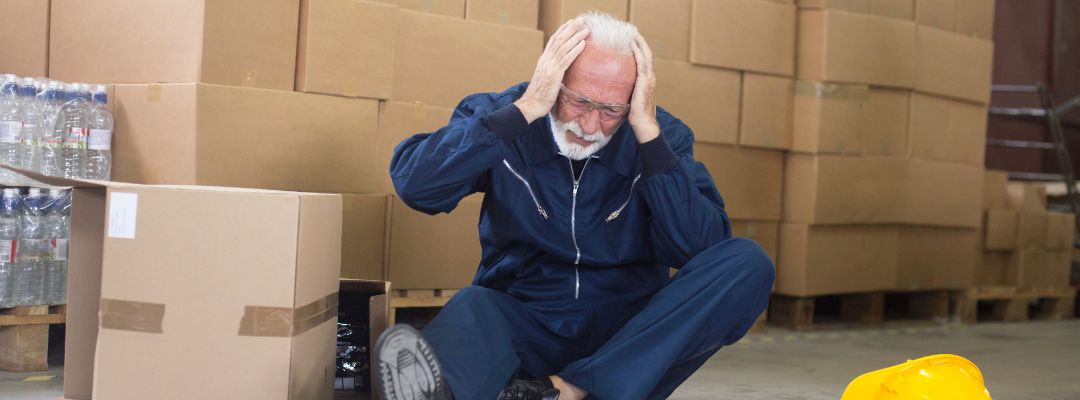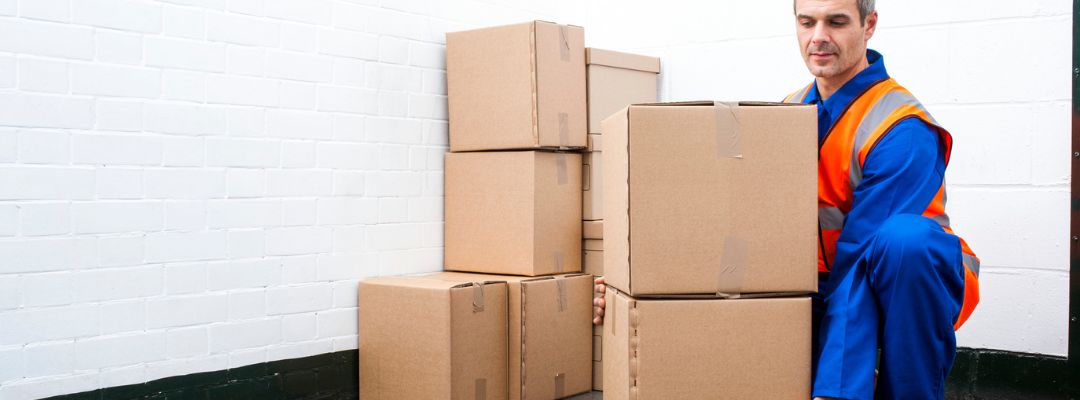Most Common Moving Injuries And Useful Tips On How To Avoid Them

Even though relocating to a new home is an exciting moment, it can also be a physically exhausting activity that puts your health in danger. Whether you’re relocating across the nation or even down the block, it’s critical to take the proper safety measures to safeguard both you and your possessions. Moving injuries can be mild to serious, ranging from scratches and bruises to back strains. However, by following a few helpful guidelines and security measures, you may prevent moving-related accidents and make your move a smooth and successful experience.
In this blog, we will explore some of the most common moving injuries and provide practical tips on how to prevent them. We will also discuss the importance of preparation, proper lifting techniques, and using the right equipment to make moving safer and more efficient. With these tips in mind, you can make your move a stress-free and injury-free experience.
Strains And Sprains

Some of the most typical moving injuries include strains and sprains. These injuries happen when you exert too much effort, whether it’s lifting big objects or repeatedly performing the same actions for a long time. Your knees, shoulders, back, and other joints are all susceptible to sprains and strains. They may result in discomfort, swelling, and restricted motion, which will make it challenging to finish your exercise.
It’s important that you use safe lifting practices to prevent strains and sprains. When lifting large objects, bend your knees while maintaining a straight back. Use your legs to lift rather than twisting your back. To transfer big goods, if at all possible, use a hand truck or a dolly. Additionally, take regular breaks to stretch and rest.
Cuts And Bruises

Other common relocation injuries are cuts and bruises. These accidents can happen when you’re handling sharp objects, like knives, or when furniture or boxes fall on you. They can also happen when you’re packing and unpacking things. Even though they can appear to be minor injuries, cuts and bruises can be uncomfortable and even become infectious if left untreated.
Put on protective gear like gloves and closed-toe shoes to prevent cuts and bruises. Make sure that your things are firmly packed so they won’t move around during transportation by using the right packaging procedures. Additionally, be cautious when handling sharp goods and take your time unloading.
Back Injuries
Back injuries are common when carrying big objects, especially for individuals who do so carelessly. Serious back injuries can cause persistent pain, a loss of movement, and other problems. Lifting heavy objects, twisting your back, or exerting yourself too much can all result in them.
Use safe lifting techniques as described earlier to prevent back injuries. A good tip when transferring large stuff is to enlist assistance, especially if you aren’t accustomed to carrying hefty things. Take frequent breaks to stretch and rest your back, and if you need to, use a brace or other form of support.
Trips And Falls
Other frequent moving injuries include trips and fall. They can happen while you’re walking on uneven ground, lifting large objects, or when obstructions like furniture or boxes are in your path. Broken bones, sprains, and other types of injuries can occur from trips and falls.
To avoid trips and falls, keep walkways and paths clear of obstacles. Use proper lighting to ensure that you can see where you’re walking. Wear appropriate shoes with good traction, and be careful when carrying heavy items.
Head Injuries

If you’re not careful, you could get a serious moving injury like a head injury. They can be brought on by slamming your head against low ceilings, door frames, or other obstructions. Concussions, abrasions, and other severe injuries are sometimes the result of head injuries.
Keep an eye out for low-hanging items or obstructions and be aware of your surroundings to prevent head injuries. To prevent objects from falling during shipping, use suitable packaging procedures. If you need to, put on a helmet, especially if you’re carrying anything heavy or working in a space with low ceilings.
Useful Tips To Avoid Moving Injuries

Now that you know some of the most common moving injuries, here are some useful tips to help you avoid them:
- Plan Ahead: Before you start packing and moving, take some time to plan ahead. Make a list of everything that needs to be done, including packing, cleaning, and transporting your belongings. This will help you stay organized and reduce the risk of injury. It’s also important to create a plan for how you’ll move heavy items. Make sure you have the necessary equipment and help to move heavy items safely.
- Get The Right Equipment: Using the right equipment can make moving easier and safer. Dollies, hand trucks, and straps can help you lift and move heavy items without straining your back or other muscles. It’s crucial to pick the appropriate equipment for your requirements and to operate it correctly. To prevent harm, carefully read the instructions and abide by the safety recommendations.
- Stay Hydrated: Drinking plenty of water throughout the day can help prevent fatigue and keep you alert and focused. Dehydration can make you more prone to injury, so it’s important to drink water regularly. Avoid sugary or caffeinated drinks, which can dehydrate you and cause fatigue.
- Take Breaks: Moving can be physically demanding, and it’s important to take frequent breaks to rest and stretch your muscles. Take a break every 30-60 minutes to stretch your arms, legs, and back. By doing this, ailments like muscular sprains can be avoided.
- Ask For Help: Don’t be afraid to ask for help when moving heavy items. Enlist the help of friends, family, or professional movers to help you move safely and efficiently. Make sure everyone involved understands how to lift and move heavy items safely.
- Wear Protective Gear: Wear protective clothing like gloves and closed-toe shoes to protect your hands and feet from cuts and bruises. If you’re moving in cold weather, dress warmly to avoid hypothermia and other cold-related injuries.
- Label Boxes: Label boxes clearly to avoid confusion and make it easier to transport items. This can help prevent trips and falls and make the moving process more efficient. Use a marker to label boxes with the contents and room where they belong.
- Use Proper Packing Techniques: Using proper packing techniques is essential to prevent injuries and protect your belongings during the move. Use sturdy boxes and padding to protect fragile items. When packing heavy items, distribute the weight evenly between boxes and avoid overpacking.
- Hire Professional Movers: If you’re moving a lot of heavy or awkward items, consider hiring professional movers to help you move. Professional movers have the expertise and equipment to move your belongings safely and efficiently, reducing the risk of injury. When hiring movers, be sure to choose a reputable company and ask for references.
Importance Of Preparation

Preparation is key to making moving safer and more effective. Here are some reasons why preparation is important when it comes to moving:
1: Reducing The Risk Of Injury – Injury risk during the moving process can be decreased with planning and preparation. Understanding safe ways to transport large objects is one of the most important components of preparedness. This entails using the proper tools, such as straps and dollies, and getting assistance from others. Additionally, being well-prepared can help you avoid accidents like muscular strains or other types of injuries that can occur when you rush or lift too much weight at once.
2: Saving Time And Money – You may reduce the amount of time and money you spend moving by properly preparing. This is being aware of the things you require and buying them in advance so you don’t have to make hurried journeys to the store. Having a strategy in place can also save you money by preventing you from hiring extra staff or renting equipment at the last minute, which can be pricey.
3: Protecting Your Belongings – One of the key benefits of preparation is protecting your belongings during the move. This includes using proper packing techniques, such as wrapping fragile items in bubble wrap or padding, and labeling boxes clearly so that items don’t get lost. By taking the time to pack and label your belongings properly, you can reduce the risk of damage or loss during the move.
4: Reducing Stress – Even though moving can be a difficult event, preparation can help lower stress levels and make the process easier to handle. Knowing what to anticipate and when entails developing a plan and timeframe for the relocation. Another benefit of having a plan is that it can make you feel more in control of the circumstance, which can lower your stress levels.
5: Improving Efficiency – Proper preparation can also improve the efficiency of the moving process. This includes having all the necessary supplies and equipment in place, so you don’t waste time searching for or purchasing items during the move. Additionally, having a plan in place can help you move your belongings more quickly and efficiently, so you stay on schedule.
Proper Lifting Techniques

Proper lifting techniques are essential to making moving safer and more effective. Here are some tips on how to lift heavy items correctly:
- Use Your Legs, Not Your Back: When lifting large objects, it’s important to use your legs rather than your back. This is due to the fact that the muscles in your legs are significantly stronger than the muscles in your back. Be sure to keep your back straight while lifting and bending your knees. To aid in preserving stability and balance, keep the object close to your body.
- Avoid Twisting: While lifting large objects, avoid twisting your body as much as possible to avoid putting additional strain on your back. Pivot with your feet and move your body as a whole rather than twisting. The possibility of muscular sprains and other injuries can be decreased as a result.
- Maintain Good Posture: Good posture is essential when lifting heavy items. Keep your shoulders back and your chest out, and avoid hunching over. This can help reduce the strain on your back and neck.
- Practice Good Communication: When lifting heavy items with others, it’s important to communicate effectively. Agreeing on a plan for how to lift and move the item can help reduce the risk of injury and improve efficiency. Additionally, giving clear directions during the lifting process can help ensure that everyone is on the same page.
By following these proper lifting techniques, you can make moving safer and more effective. Proper lifting techniques can help prevent injuries, reduce strain on your body, and make moving heavy items more manageable.
Conclusion
Moving can be a challenging and stressful task, but with proper planning, preparation, and execution, you can avoid common injuries and make your move a success. Taking the necessary steps to protect yourself, your belongings, and your team during the move is critical. By following the useful tips outlined in this article, you can make your move safer and more efficient. Remember to prioritize safety and take breaks when necessary. Communicate effectively with your team, use proper lifting techniques, and employ the right equipment to move your belongings safely and securely.
With the right mindset and approach, you can avoid injuries and make your move a positive experience. Moving can be an exciting opportunity for a fresh start, but it’s important not to overlook the potential risks involved. By staying aware and focused on safety, you can enjoy a smooth and stress-free move into your new home. Take the time to prepare properly, and enlist the help of moving professionals when needed, to ensure that your move is a success.



